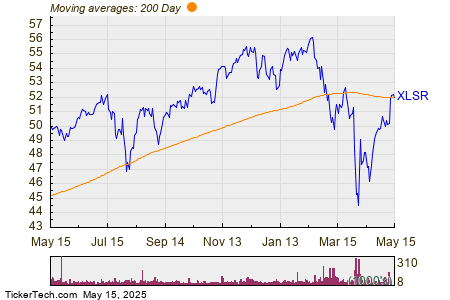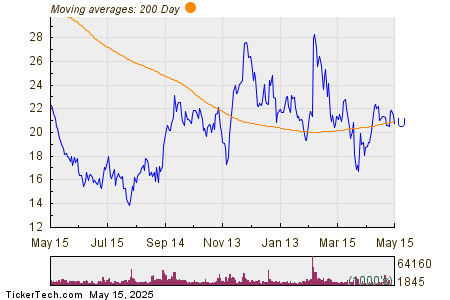Nvidia Reclaims $3 Trillion Market Cap Amid Trade Optimism
Nvidia (NASDAQ: NVDA) first achieved a market capitalization of $3 trillion in June 2024. For much of the following eight months, the GPU manufacturer maintained this status until facing a significant sell-off this year. Recently, however, Nvidia has rejoined Apple (NASDAQ: AAPL) and Microsoft (NASDAQ: MSFT) in the $3 trillion club. Analysts are now speculating whether it could become the first company to reach a $4 trillion market cap by 2026.
Nvidia’s Recovery Explained
Nvidia’s recent rebound did not come from internal factors alone. To understand its recovery, it’s crucial to first look at the reasons behind its initial decline. Major trade restrictions imposed by the Trump administration on the export of H20 GPUs to China played a significant role. As a consequence, Nvidia announced a $5.5 billion writedown for the first quarter of 2025.
Additionally, tariffs imposed by the White House affected Nvidia’s stock performance. These tariffs, particularly steep on imports from China, raised concerns among investors who worried about the reciprocal tariffs levied by China on U.S. products.
Given the negative impact of these trade issues, positive news regarding trade relations has fueled Nvidia’s recovery. Recent signals from the Trump administration indicating a possible reduction in Chinese tariffs have led to increased investor optimism, further buoyed by a recent 90-day pause on some tariffs.
Potential for Growth in the Tech Giants
Nvidia’s return to the $3 trillion club has sparked discussions about its potential to leap ahead of Microsoft and Apple towards the $4 trillion mark. Microsoft currently holds the closest position to this milestone. Nvidia’s shares are trading at 26.9 times forward earnings, compared to Microsoft’s 30 times and Apple’s approximately 27 times. This slightly lower valuation may provide Nvidia with more room for growth than Microsoft and a comparable opportunity to Apple.

Image source: Getty Images.
Nonetheless, the growth outlook for each company varies significantly. Analysts project Nvidia’s earnings to surge by approximately 47% this fiscal year and by 29% in the next. In contrast, Apple is expected to report earnings growth of 18% this year, with 9% in the following year, while Microsoft anticipates around 14% growth this year and nearly 13% the next.
Consequently, I believe Nvidia is well-positioned to become the first company to reach a $4 trillion valuation, although this trajectory may meet competition from other players, including Amazon and Alphabet.
The $4 Trillion Question by 2026
Could Nvidia achieve a $4 trillion market cap by 2026? My confidence about the timing is more cautious. Although investors are enthusiastic about the reduced risk of a trade war between the U.S. and China, significant tariffs are still expected to remain in place. Such tariffs could hinder Nvidia’s operations.
Furthermore, a potential economic slowdown caused by these tariffs may cause companies to limit their investments in artificial intelligence (AI), negatively impacting demand for Nvidia’s GPUs.
To reach a $4 trillion market cap, Nvidia would need an approximate 25% increase in its market valuation. While I believe this goal is attainable within a year and a half, numerous factors may complicate achieving it in a short timeframe. I maintain that Nvidia is likely to be the first $4 trillion company, but I will not speculate on the exact timing.
Exploring Buying Opportunities
Investors often feel they miss valuable opportunities in high-performing stocks. Analysts currently recommend three companies that they believe are primed for substantial growth.
Nvidia: If you had invested $1,000 when our analysts first recommended doubling down in 2009, your investment would have grown to $336,942!*
Apple: A $1,000 investment in 2008 would now be worth $40,423!*
Netflix: Similarly, a $1,000 investment in 2004 would have reached $613,951!*
Currently, “Double Down” alerts for three exceptional companies are being issued, offering another chance to invest strategically.
*Investment returns as of May 12, 2025.
Suzanne Frey, an executive at Alphabet, is a member of The Motley Fool’s board of directors. Other affiliations include members of The Motley Fool’s board with close ties to various companies mentioned above. The Motley Fool recommends several stocks and has a disclosure policy.
The views and opinions expressed herein are those of the author and do not necessarily reflect those of Nasdaq, Inc.






